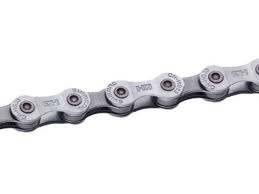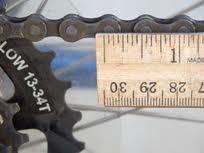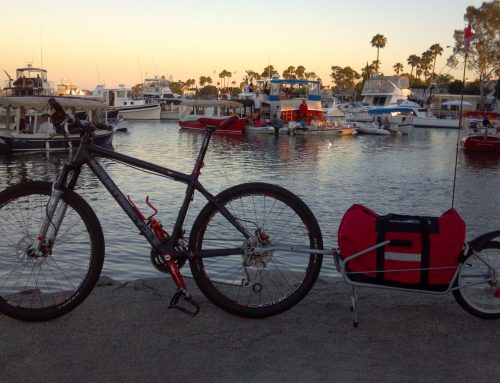
How to clean a bicycle chain
Just like a comic book superhero, your bike chain has two archenemies — water and dirt. Combined, the two substances essentially turn into sandpaper, slowly grinding away at the links and bushings, causing premature wear. Fortunately bike lube prevents this destruction and can also protect against bike chain rust. Since bike lube attracts dirt and other particles, the bike chain must be cleaned regularly, especially if you’re riding in dirt, sand or wet conditions.
Proper bicycle chain cleaning goes well beyond just dropping some lube on your links and wiping it clean. Begin by applying a degreaser to the bicycle chain. Simple Green or a bike specific degreaser should do the trick. For bicycle chains that haven’t seen their original color in months, remove the bicycle chain from the bike (using either a bike chain tool or a quick link) and soak it in a degreaser. There are several options for cleaning the bicycle chain. You can invest in a bicycle chain cleaning tool, which scrubs the links as they run through the tool’s brushes. You can also use your own brushes (another use for your old toothbrush!), or run the bike chain through an old rag or paper towel. Next, rinse the soap off with water and run the bike chain through a towel or rag until it appears clean and dry.
The bicycle chain lubricant you choose should be bike specific and you should take into account the conditions you ride in when choosing a lube. Apply a small drop of it to each link and allow it to penetrate before wiping down the bike chain. Try to lubricate the day before a ride in order to allow it to fully sink into the links. To save yourself work (and unnecessary calf tattoos) keep a cloth handy to quickly wipe down the bike chain after each ride.
How to measure a bicycle chain for wear
As much as we would like to believe that bicycle chain stretch is caused by our own powerful pedalling, it’s actually caused by the wearing away of the metal where the rivet rotates inside the bushing. Because all bicycle chain links flex and straighten over time, it’s important to measure your bike chain for wear. Keeping on top of the amount of wear will also increase the lifespan of your other drivetrain parts. You can purchase a fancy bike chain measuring tool or you can save a few bucks and enlist a standard ruler for the job. Your bike chain has a chain pin at every half inch. When the bicycle chain starts to wear, it stretches. Begin by lining the beginning of your ruler up with the left side of one of the chain pins near the rear derailleur. Keep the ruler held up to the bike chain and go another 12 inches to the 13 inch mark. If the left edge of this pin falls within 1/16 of the 13 inch mark, the bicycle chain still has life left in it. If the number is greater, replace the bicycle chain.




